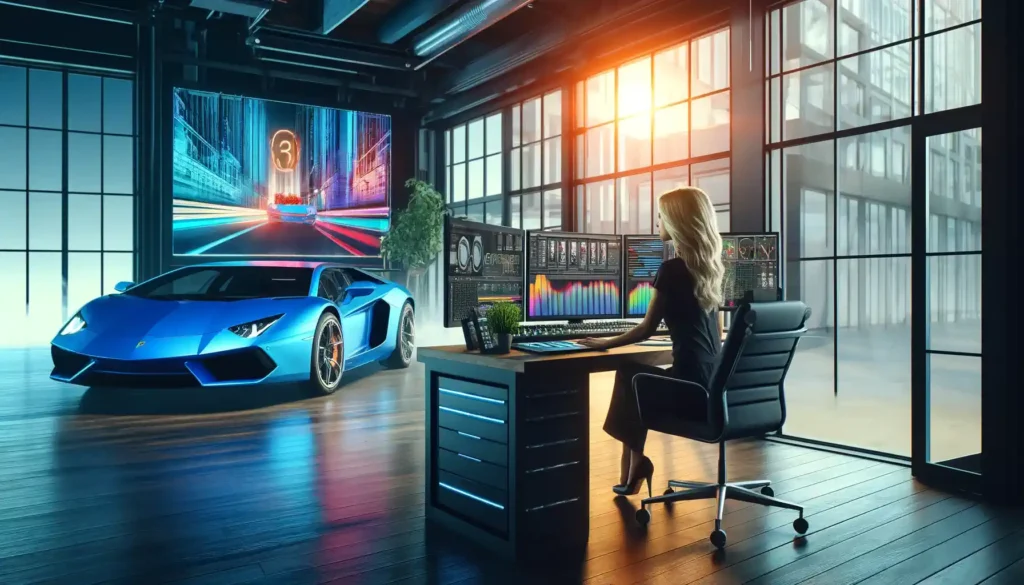When you work with a motion designer, you’re not just getting an epic animation—you’re also getting a variety of file formats, each with its own special quirks. Whether you’re showcasing your latest product, creating a social media ad, or putting together a company presentation, knowing which file formats you’ll receive (and why) can make all the difference. What File Formats Do Motion Designers Deliver? So, let’s dive into the world of MP4s, GIFs, and everything in between to understand what you’re actually getting when that final delivery hits your inbox.

1. The MP4—The Vanilla of File Formats
So, you’ve just paid for this epic motion design animation—fireworks, dazzling transitions, maybe even a dancing banana (hey, no judgment). The designer sends you a folder, and the first thing you see is an MP4. Now, the MP4 is the go-to, the crowd-pleaser, the vanilla ice cream of file formats. It plays on everything—your phone, laptop, and probably even your toaster if you ask nicely. But here’s the kicker: MP4s are compressed. So, it’s like getting a supermodel photo… but with a slight Instagram filter. Looks great, but there’s a hidden layer of smoothness we’re missing.
2. The MOV—For the Fancy Tech Snob in All of Us
Ah, the MOV. Now we’re talking quality. This is the format that flexes its muscles. It’s the filet mignon of the animation world—juicy, high-resolution, and more detailed than a CSI crime scene. MOVs are great if you’re planning to edit or showcase your animation on the big screen (or, you know, that ultra-HD monitor that cost more than your rent). Just make sure your computer can handle it, because MOV files are heavier than a triple-decker cheeseburger. Warning: may cause hard drives to go on strike.
3. The GIF—Your Animation on a Loop, Forever
Okay, GIFs are the cousins at the family reunion who show up late, stays the longest, and never shuts up. Why? Because it loops. Forever. Non-stop. This format is perfect if you need short, punchy animations, like those “how it started vs. how it’s going” memes. But don’t expect the GIF to be your high-quality motion design. It’s pixelated and compressed, kinda like sending your friend a blurry selfie from the other side of the world. But hey, it’s fun, right?
**4. The AVI—Because Someone
4. The AVI—Because Someone Still Uses Windows XP
Now, the AVI format… who’s still rocking this? It’s like finding a Walkman in your garage—it works, but seriously, why? AVI is bulky, outdated, and takes up more space than your ex’s emotional baggage. Sure, it’s uncompressed and gives you top-notch quality, but the file size is so big, it’s practically sending your hard drive to therapy. Use it if you want, but just know you’re keeping a relic alive.
5. The PNG Sequence—For When You’re a Control Freak
If you thought motion designers were chill, let me introduce you to the PNG sequence. This is when they send you each frame of the animation as a separate image. It’s like saying, “Here, YOU deal with this.” Great for post-production, but if you’re just trying to watch your animation, it’s a bit like getting a puzzle for your birthday when all you wanted was cake. Sure, the quality’s pristine, but now you have 500 individual files staring you in the face, judging your organizational skills.
6. The WebM—For Those Who Like Their Animations Light and Breezy
WebM is the new kid on the block, and it’s here to solve all your “this file is too big” problems. Lightweight, fast-loading, and perfect for web use, it’s like the animation version of a smoothie—everything you need, nothing you don’t. Just don’t try to upload it to Instagram, or your computer might give you the “I can’t even” look.
7. The SWF—For When You’re Stuck in 2007
Look, if someone hands you an SWF file, run. Flash animations used to be the coolest thing since sliced bread—until Adobe decided to pull the plug on it. Now, it’s the animated equivalent of a floppy disk. If you somehow find yourself with an SWF, it’s either time for a nostalgia trip to the early 2000s, or a serious conversation with your motion designer about living in the present.

8. The Verdict—Your Designer’s Favorite Game of “What Will Work?”
The truth is, motion designers have a secret—they never really know what format you need. They’re like magicians pulling random file formats out of a hat. They’ll ask, “Where’s this going? Social media? A billboard in Times Square? Your grandma’s email inbox?” And then they deliver accordingly. But whether it’s an MP4, MOV, GIF, or some ancient format that requires a decoder ring, just remember: the format is the vehicle, but the animation is the ride. And baby, it’s gonna be one smooth trip.


